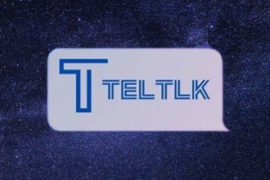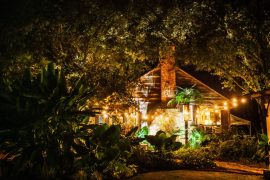It was once spoken in the Solomon Islands, in the province of Malaita. It was a member of the Oceanic branch of the Austronesian language family and was closely related to the To’abaita language. Teltlk was first documented by the German anthropologist Robert H. Codrington in 1885. He collected a vocabulary of about 200 words and published a brief grammar of the language in 1887.
However, it was in the 1970s that Teltlk was studied in depth by the American linguist Robert Blust. Blust conducted fieldwork in the Solomon Islands and published several articles and monographs on Teltlk, including a grammar and a dictionary.
It was a relatively small language, with only about 1,000 speakers at the time of Codrington’s visit. The language was spoken in several villages in the Malaita Province, including Teltlk, Laabon, and Elite. However, the number of speakers of Teltlk declined rapidly in the 20th century due to the influence of the To’abaita language and the spread of Christianity. By the 1970s, only a few fluent speakers of Teltlk remained.
The last fluent speaker of Teltlk, Laabon Laabon, died in 1992. With his death, the language became extinct. However, the legacy of Teltlk lives on in the work of Robert Blust and other linguists who have studied the language. Their work has helped to preserve the memory of Teltlk and provide a valuable resource for future generations of linguists and anthropologists.
Phonology
Had a relatively simple phonology, with 16 consonants and five vowels. The consonants were:
- Plosives: p, t, k, b, d, g
- Fricatives: s, h
- Nasals: m, n
- Liquids: l, r
- Semivowels: w, y
The vowels were:
- Short vowels: a, e, i, o, you
- Long vowels: ā, ē, ī, ō, ū
Teltlk also had several diphthongs, including ai, au, and oi.
Grammar
It was a verb-final language with a basic word order of subject-object-verb. The language had a relatively simple case system, with only nominative and accusative cases. The nominative case was used for the subject of a verb, while the accusative case was used for the object of a verb.
So also had several verbal affixes indicating tense, mood, and aspect. The most common tense markers were the present tense marker -i and the past tense marker -a. So The most common mood markers were the indicative mood marker -e and the imperative mood marker -o. The most common aspect markers were the perfective aspect marker -ia and the imperfective aspect marker -ka.
Vocabulary
The vocabulary of it was relatively small, with only about 2,000 words. However, the language had several words unique to it, including words for plants, animals, and cultural objects.
Some of the most common words in Teltlk include:
- Person: tau
- Man: tane
- Woman: caffeine
- Child: Tama
- House: file
- Canoe: waka
- Food: kai
- Water: wai
- Fire: ahi
- Sun: la
- Moon: Masina
- Star: fetus
What is Teltlk?
Teltlk is a free, open-source platform that allows users to create and share interactive maps. It is designed to be easy to use, even for those without experience with mapping software. Teltlk can be used to create maps for a variety of purposes, including:
- Education: Teltlk can be used to create interactive maps for students to learn about geography, history, and other subjects.
- Business: Teltlk can be used to create maps to track sales data, customer locations, and other business-related information.
- Non-profits: Teltlk can be used to create maps to track the progress of projects, visualize data, and tell stories.
How does Teltlk work?
Teltlk is a web-based platform that allows users to create maps without installing software. To create a map, users must sign up for a free account and click the “Create a Map” button.
Once they have created a map, users can add data layers to it. Layers can be added from a variety of sources, including:
- Local files: Users can upload their own data files, such as spreadsheets or shapefiles.
- Online sources: Users can add data from online sources, such as Google Earth or OpenStreetMap.
- Teltlk’s built-in data: Teltlk provides several built-in data layers, such as country borders, roads, and rivers.
Once users have added data to their map, they can style it to look how they want. Teltlk offers a variety of styling options, including:
- Colours: Users can change the colours of the features on their map.
- Labels: Users can add labels to features on their map.
- Popups: Users can add popups containing additional information to their map’s features.
Once users are finished styling their map, they can share it with others. Teltlk offers several sharing options, including:
- Embedding: Users can embed their maps on their websites or blogs.
- Sharing links: Users can share links to their maps with others.
- Exporting: Users can export their maps to various formats, including PDF, PNG, and SVG.
What are the benefits of using Teltlk?
There are several benefits to using Teltlk, including:
- It’s free and open-source: Teltlk is free to use, and its source code is available on GitHub. This means that users can customize Teltlk to meet their own needs.
- It’s easy to use: Teltlk is designed to be easy to use, even for those without experience with mapping software.
- It’s versatile: Teltlk can create maps for various purposes, including education, business, and non-profits.
- It’s powerful: It offers several powerful features, such as the ability to add multiple layers of data, style maps, and share maps with others.
Conclusion
It is a powerful and versatile platform that can create interactive maps for various purposes. It is free to use and easy to learn, making it an excellent option for anyone who wants to create maps. it was a fascinating language spoken in the Solomon Islands for centuries. Several linguists studied the language, including Robert H. Codrington and Robert Blust. However, it became extinct in the 1990s due to the influence of the To’abaita language and the spread of Christianity.
The legacy of Teltlk lives on in the work of Robert Blust and other linguists who have studied the language. Their work has helped to preserve the memory of it and provide a valuable resource for future generations of linguists and anthropologists.
FAQS :
What is Teltlk?
It is a social networking platform that connects people worldwide who share a common language. It is design to make it easy for people to find and connect with others who speak the same language, regardless of location.
How does Teltlk work?
It allows users to create profiles and search for other users who share their language. Users can then send messages to each other, share photos and videos, and join groups and forums.
What languages does Teltlk support?
The supports over 100 languages, including English, Spanish, French, Chinese, Hindi, Arabic, and Russian.
Is Teltlk free to use?
Yes, Teltlk is entirely free to use. There are no subscription fees or hidden charges.
How do I sign up for it?
To sign up , visit the website and click the “Sign Up” button. You will then be ask to provide your name, email address, and password.
What are the benefits of using Teltlk?
There are many benefits to using it, including:
- Connect with people from all over the world who share your language.
- Find new friends and learn about different cultures.
- Share your thoughts and ideas with others.
- Get help with language learning.
- Join groups and forums to connect with others who share your interests.
Is Teltlk safe to use?
Yes, it is safe to use. The platform has several security features to protect user data, including SSL encryption and two-factor authentication.
What are the terms of service for it?
The terms of service for it can be found on the website. Please read the terms of service carefully before using the platform.
How can I contact Teltlk?
If you have any questions or concerns, you can contact by email or by phone. The contact information can be found on the website.
What is the future of Teltlk?
It is committe to providing a safe and enjoyable platform for people to connect. The platform is constantly being update and improved, . New features are add continuously. It is excited to continue to grow and connect people from all over the world.
Soothing Sanctuary: Thе Transformativе Powеr Of Magnеsium Salt Baths



